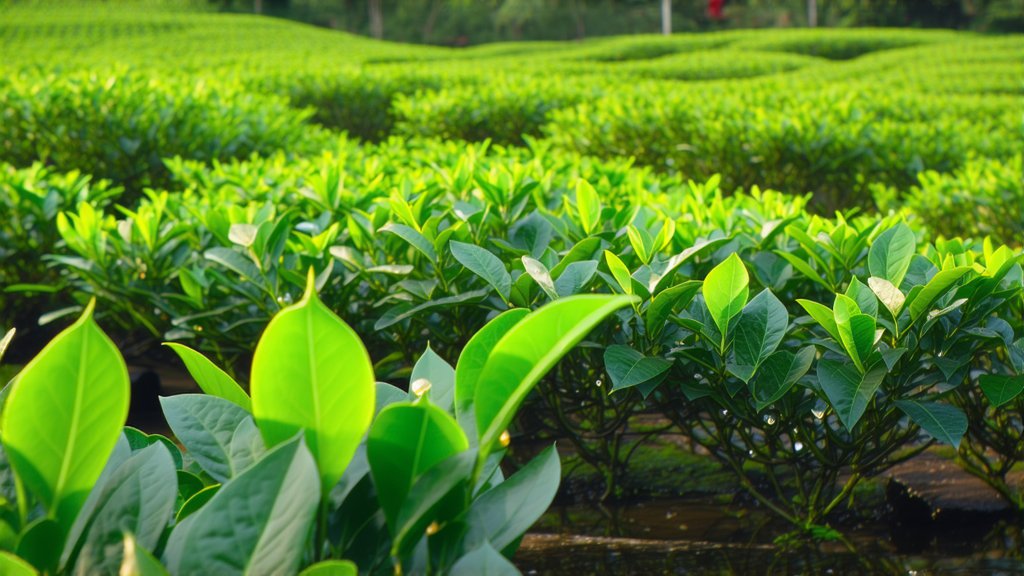
Bai Mudan, often referred to as the "White Peony" in English, is one of the most revered varieties within the realm of Chinese white teas. This exquisite category of tea originates from the Fujian Province of China, a region renowned for its favorable climate and fertile soil that nurture the growth of high-quality tea plants. Bai Mudan stands out not only for its unique processing methods but also for its delicate flavor profile and numerous health benefits. In this comprehensive exploration, we will delve into the history, types, production process, and the art of appreciating Bai Mudan.
Historical Background
The history of Bai Mudan can be traced back over 200 years to the Qing Dynasty (1644–1912). It is said that Bai Mudan was first discovered by chance when tea farmers noticed that certain tea bushes produced buds and leaves covered in fine white fuzz, resembling peonies in bloom—hence the name "White Peony." Over time, these unique characteristics were cultivated and perfected, leading to the development of Bai Mudan as a distinct variety of white tea.
Varieties of Bai Mudan
While Bai Mudan is primarily grown in Fujian Province, there are subtle variations depending on the specific terroir and microclimate conditions. The two main types are:
-
Gongmei Bai Mudan: Often considered the epitome of quality, Gongmei Bai Mudan features whole leaves and long, slender buds covered in a downy white fuzz. The leaves are typically plucked with the bud and two young leaves still attached, providing a richer flavor and more complex aromatic profile.
-
Shoumei Bai Mudan: Slightly less prestigious than its Gongmei counterpart, Shoumei Bai Mudan consists of shorter, broken leaves and buds. While it may lack some of the visual appeal of Gongmei, it still offers a delightful taste experience, making it a more affordable yet equally satisfying option for many tea enthusiasts.
The Art of Making Bai Mudan
The production of Bai Mudan is an intricate process that involves several key steps:
-
Withering: Freshly plucked tea leaves and buds are spread out in a thin layer to wither naturally under shade. This step allows the leaves to lose moisture slowly while preserving their essential oils and nutrients.
-
Fixation: Unlike green or black teas, which undergo high-temperature fixation, Bai Mudan is gently fixed using low heat to halt the enzymatic activity without destroying the natural flavors and delicate structure of the leaves.
-
Drying: The fixed leaves are then dried further, either through sun drying or low-temperature oven drying. This final step ensures that the tea retains its characteristic white downy appearance and enhances its flavor profile.
Appreciating Bai Mudan
To truly appreciate Bai Mudan, one must engage all the senses in the tea-tasting ritual. Here's a step-by-step guide to savoring this exquisite tea:
-
Preparation: Use a transparent glass teapot or a Gaiwan to fully appreciate the visual beauty of Bai Mudan as it unfurls during brewing. Start with about 5 grams of tea per 200 ml of water.
-
Water Temperature: Use water just below boiling point, around 85-90°C (185-194°F), to avoid scalding the delicate leaves.
-
First Infusion: Rinse the leaves briefly with hot water to awaken them and discard this initial wash. This helps to open up the leaves and prepare them for optimal flavor extraction.
-
Subsequent Infusions: For each subsequent infusion, increase the steeping time slightly, typically starting from 1 minute and gradually extending to 2-3 minutes. Bai Mudan can be steeped multiple times, with each infusion revealing different layers of flavor.
-
Aroma and Taste: As you inhale the fragrant steam rising from your cup, notice the subtle floral notes mixed with hints of honey and melon. Take small sips, allowing the tea to coat your palate and savor the smooth, mellow taste that lingers pleasantly.
Health Benefits
Beyond its aesthetic and sensory pleasures, Bai Mudan boasts several health benefits. Rich in antioxidants, catechins, polyphenols, it helps combat free radicals, promotes cardiovascular health, and supports immune function. Additionally, Bai Mudan is known for its calming effects on the mind, making it an excellent choice for relaxation and stress relief.
In conclusion, Bai Mudan is more than just a tea; it is a testament to the artistry and tradition of Chinese tea culture. From its storied history and meticulous production process to its nuanced flavors and health-promoting properties, Bai Mudan offers a profound tea-drinking experience that continues to captivate both novice and seasoned connoisseurs alike. Whether enjoyed alone in quiet contemplation or shared among friends, Bai Mudan invites you to partake in a moment of tranquility and connection with nature.